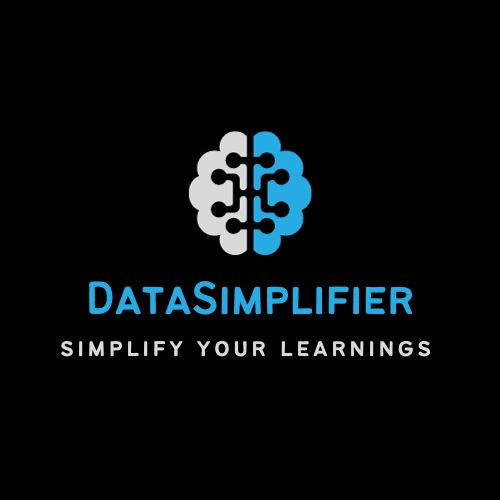The interview process, be it for Indian students or professionals looking to enter the exciting worlds of AI, ML, and data analytics and data analytics, has become critical. You will find in-depth knowledge in this Context Vectors ultimate guide required to clear these interviews. We will explore what context vectors are, how they work in natural language processing (NLP), and how they are employed in several AI applications. You will learn what you need to know about context vectors to really understand the place they hold in the modern AI landscape, and how to employ them in job interviews.

The Power of Contextual Vectors Explained
Context Vectors (also called contextual vectors) are numbers that represent the meaning of a word or phrase in a given context. While in conventional word embeddings, each word has one representation, context vectors change depending on the surrounding words, offering a much more granular view of what any given word is up to within a sentence or paragraph. It is this understanding that is essential for activities in natural language processing (NLP) such as sentiment analysis, machine translation, and text summary.
Maintaining context vectors this way is also important to make the models more complex and effective. Learn to make sense of context vectors and you will understand their power in numerous applications of AI as well as rock your interviews. In this guide, we will delve into the theory behind these capabilities and how they apply to real-world job categories, equipping you with the knowledge necessary to more confidently chart your path in the evolving AI job market.

Context Vector and Interview Success
Context vectors are indispensable in the contemporary AI domain. Context vectors, however, go beyond and are nowadays important to master both as you present your skills in AI and ML as well as when you solve true-world-use-cases. In natural language processing (NLP) domain for instance context vectors deliver a better understanding of subtle meanings and nuances in text data, leading to improved performance in tasks such as sentiment analysis and chatbot systems.
Understanding Context Vector Attention is another task that will be fundamental. If you are someone who is deep diving into NLP, employers expect you to have a strong understanding of context vectors and this blog post will surely provide you with all that knowledge. Understanding context vectors will turn you into a most wanted candidate and increase your prospects of obtaining a high-sale job in this most exciting domain. This guide has everything you need essentially, from context vector meaning to context vector example in practice; it is the definitive guide to ensure you crush your interviews.

Bridging the Gap Context Vectors Applications
Today, we will look at some applications of context vectors. Because of this, contextual word vectors like those coming from the Context Vector Transformer are crucial in dealing with data in AI projects in the real world. Think about sentiment analysis on customer reviews or generating text summaries. Context vectors make these tasks easier and better and thus are very important for data scientists and ML engineers.
Resources like Context Vector GitHub repositories help you find more relevant examples as well, that can also help you get a good grip of each topic, that you may need to demonstrate you know practically in an interview. A Better Understanding of Context Vector LLMs Also Helps In Advanced Roles This deep dive into Context vectors will come in handy especially in interviews where fetching utility of context vectors and other relevant technology will be asked.
Beyond the Basics Practical Applications
Understanding the principle of Context Vector NLP is important to understand how this technology works. What about accurate language translation or summarizing an entire lengthy text? Context vectors enable AI systems to capture a deeper understanding of textual data, moving beyond shallows interpretations of texts. These are especially useful in NLP, where nuance matters. Besides, knowledge of the real occupation of context vectors through use cases like customer feedback collection, makes this stuff very important to share with enlisters.
Such knowledge is critical for those who aspire to senior-level positions in which performance is frequently assessed and portrayed, directly in the interview process. The ability to showcase your knowledge of contex vector methods in interviews will definitely make you more appealing than other candidates and improve your chances of selection.

How Context Vectors are Helping You to Isolate Your Best Career Possible
Now, for the right idea of what Context Vectors can do, you should not only rely on the theory but break through to the application. This is exactly where Context Vector GitHub repositories, for example, prove their worth. These hold code examples and demonstrations, which could potentially help you see how Context Vectors are written.
Knowing about context vectors and their importance in the evolution of the AI is very helpful if not essential to ensure one meets with success in this competitive arena of development. If you follow this guide, you have everything you’ll need to demonstrate what you know and what you can do — and outshine potential competitors.
Conclusion: Unlock Your Potential
In the world of AI and data science, the ability to master context vectors is a key to success. Now you have an insightful guide as to what you need to know when approaching these key components during the interviews. Context vectors have an implementation and work in multiple ways, which you have to know to demonstrate your knowledge in front of companies.
All this wisdom shared in this article will surely come in handy during your career adventure. Note: As always, be sure to keep learning and stay up to date on new trends in this rapidly evolving domain!
If you’re looking for more opportunities to broaden your knowledge and opportunities to excel in the competitive job market, then join our diverse network of 10+ Telegram channels related to AI, ML, and data science. Such channels can equip you with useful information, resources, and help in your continuing professional development. And join our free job alert groups — we often post data science, AI, and ML internships and job listings.
Drop the details of your Telegram channel in the comments below for a limited time only, and we will send an invitation to join us in our premium telegram group. Now this is a great community of peers, experts, and mentors making up a unique support network for all of your needs on your data science journey. You need this helping hand.
By being more connected to existing community channels where you can share ideas and discuss developments, newscasters will have an advantage when it comes to staying ahead of the pack. This is your ticket to dive deeper into these tools and increase your horizons for tomorrow.
Get access to even more jobs We regularly post job openings in AI, ML, and data analytics, so you’ll be one of the first to hear about exciting opportunities.
Sharing exclusive opportunities, including data science internships, on our Telegram groups. We post such listings for these internships which could make you started for your career!
Our Internship Telegram Group:
We have dedicated Telegram groups for Internship opportunities in Data Science, Machine Learning, and AI. Internships are posted here regularly for Indian students helping them gauge their skills and interest as that can lead into a stable career path. Network to discover great career progression opportunities.
Share the post with your friends

